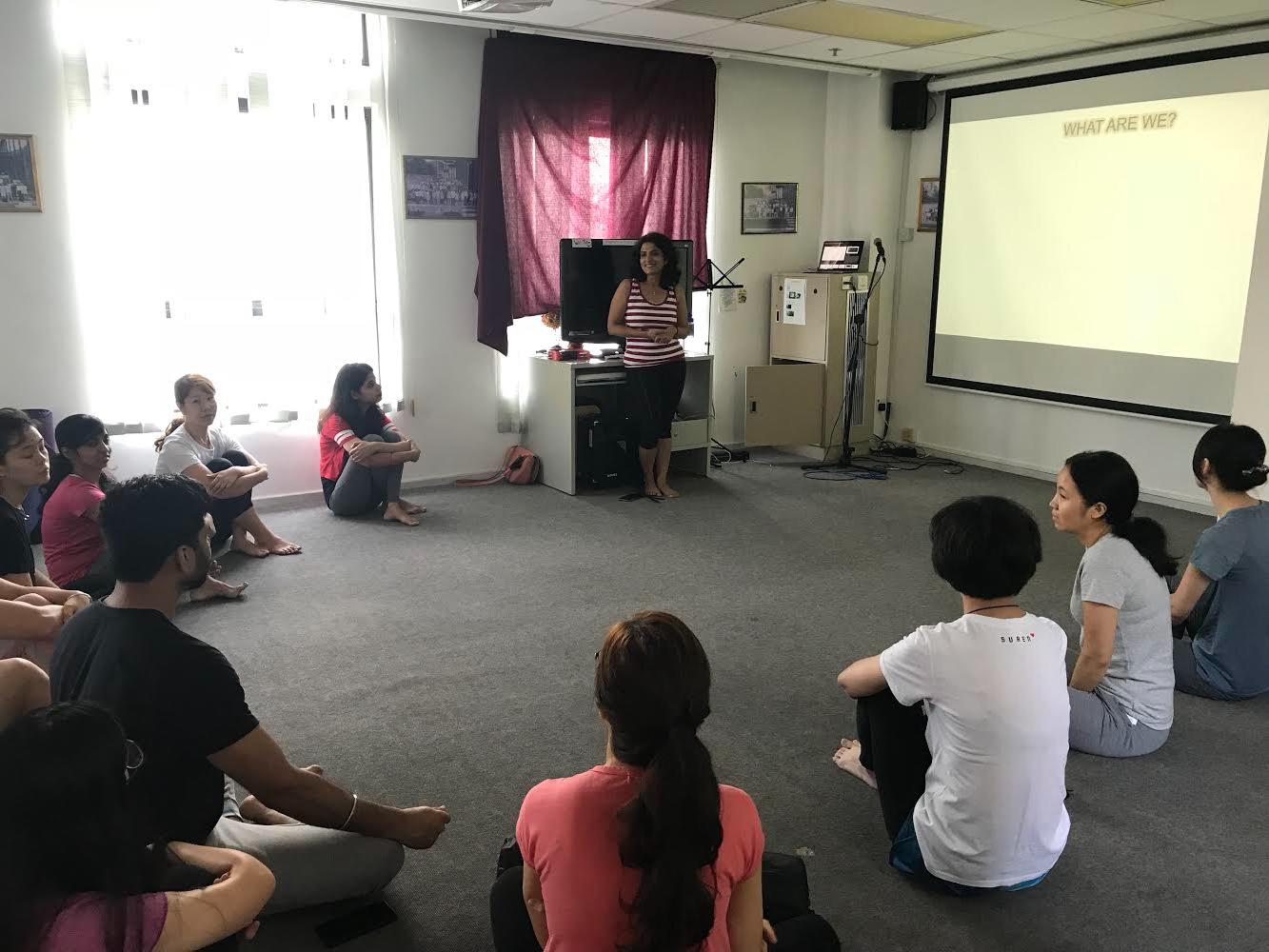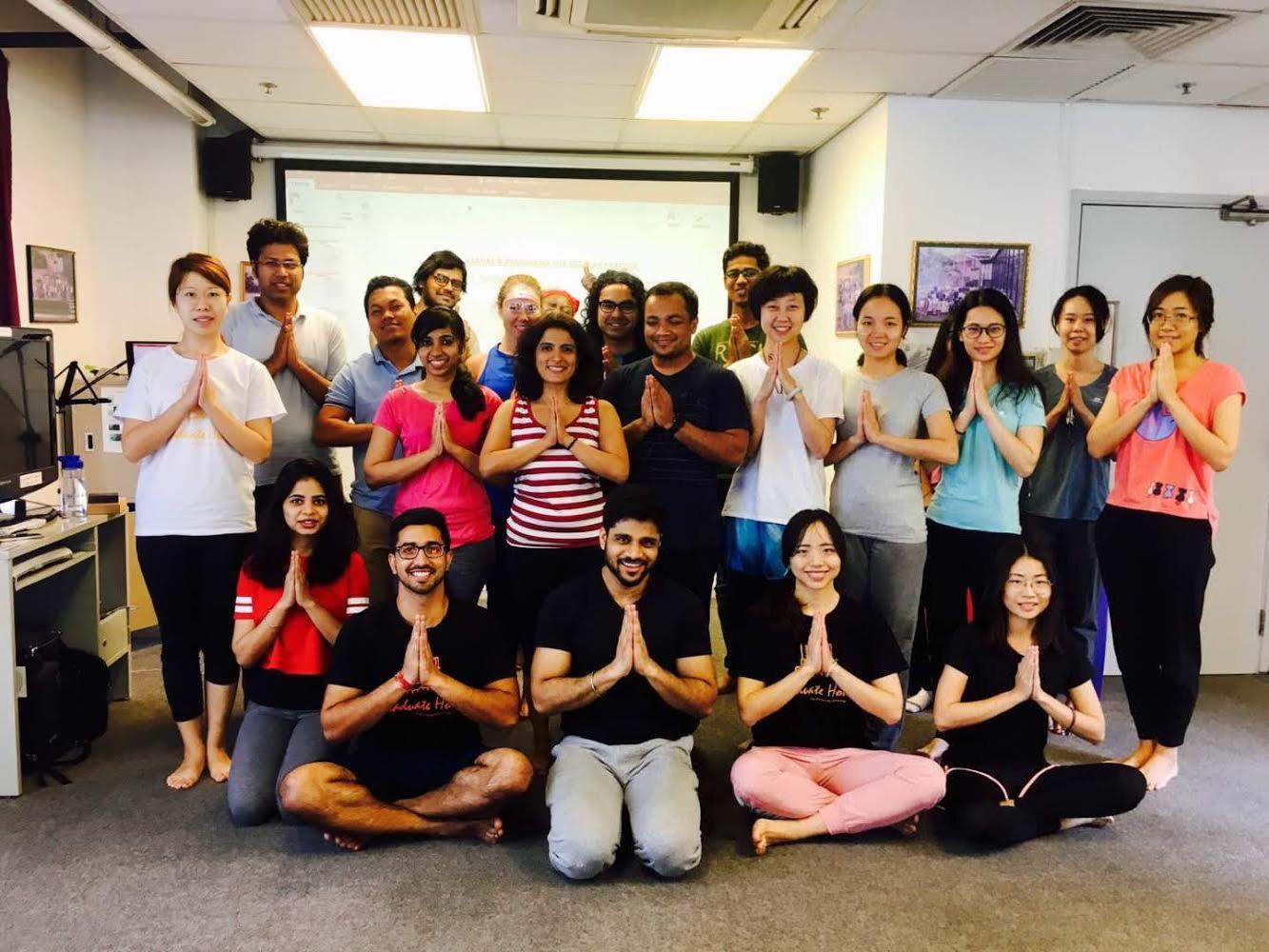On 7 October, a workshop titled “Understanding Yoga: The holistic health science” was conducted at The University of Hong Kong’s (HKU) Graduate House (GH). Ami Ganatra, who has been practicing yoga for over a decade, conducted the workshop with a presentation that covered yoga philosophy, scientific aspects of yoga, practices, and the impact of those practices on physical and mental wellbeing. She taught the class about three types of pranayam (breath control), three mudras that channelled the body’s energy flow, sun salutations, and eight asanas (yoga postures) from beginner to intermediate levels.
Around 30 students from HKU, including residents of GH, attended the workshop. My friend Mukesh Kumar and I are residents of GH and helped to organise the workshop. We had the idea for residents to engage with the yogic discipline at a scientific level, to break down the barriers between yoga and health science.
Although yoga is considered to be an ancient technique based on Indian meditative religious traditions, it has inspired an entire industry in health and psychology. It is now very popular among modern physiologists, neurologists, and physicians as it offers numerous benefits such as stress reduction, deep relaxation, and more positive states of mind.
The students were from different religious backgrounds. Ami said that although yoga originated as a religious practice, anyone can use yoga to cultivate inner peace and mental health. Ami emphasized that yoga not only aids in spiritual development, but also helps to make our mind a good friend, empowering us to live peacefully with friends, family, and the community at large.
At the start of the workshop, Ami told us how the holistic benefits of yoga could help us overcome anxiety and depression. Although we already know about yoga for its physical benefits, she told us how practice helped students, especially research students like us, to overcome mental issues.

During the Q&A session, Keisha Siriboe, a PhD candidate in education, praised the workshop as valuable and profound. Other female students were encouraged by her question about taking care of the maturing female body, Ami’s answer about yoga’s benefits for the female physique was passionate and heartfelt. During her presentation, Ami showed records of brain activity before and after yoga practice. She explained how practice can physically change our brain functions, including heart rate, body temperature, respiratory rates, muscle tension, and brain waves.
During lunch after the workshop, I asked Ami about how a research student living a sedentary lifestyle could practice yoga. Her answer was wonderful. Even though we might have difficulties practicing yoga in our busy life, we can practice while sitting on a chair with a short breathing exercise, and pay attention to our in-out breath. Also, by doing Bhramari Pranayama, known as Hummingbee Breath, we can soothe the nervous system and neutralize feelings of anxiety or tension. The humming of Bhramari Pranayama is produced at the back of the throat during practice.
Since the workshop Mukesh and I have continued to practice yoga, including anapanasati (mindfulness of breathing) meditation, in our room everyday morning for half an hour. Yoga has helped us to deal with anxiety and stress immensely. I think practicing Yoga is quite useful for research students, and we can think more positively in daily life by taking a mental break to calm and focus ourselves. This builds into a positive cycle that reinforces our wellbeing at school and renews our sense of balance and emotional relaxation.

